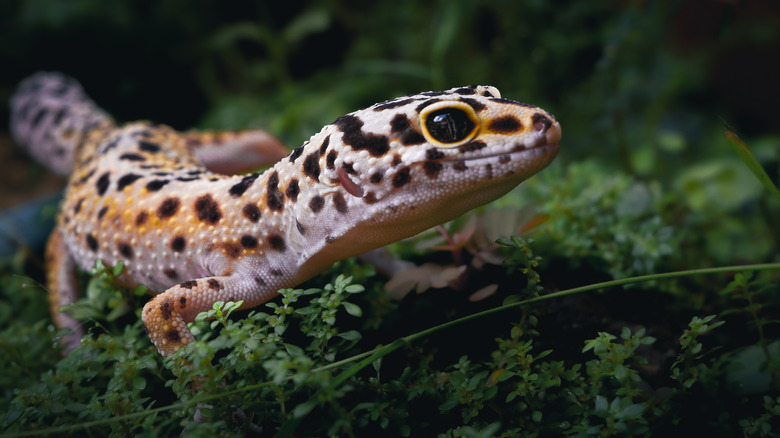How To Tell If A Leopard Gecko Is Gravid
Leopard geckos are considered easy to breed for seasoned reptile owners, but preparing for your first clutch of eggs can be a daunting task. Fortunately, a simple examination at home can help you tell if your female is carrying eggs.
Tip
Leopard geckos lay eggs; they are oviparous. Reptile experts refer to females carrying eggs as gravid, rather than pregnant, since little embryonic development occurs within the female's body.
Mating Season
The first consideration in deducing whether your female leopard gecko is gravid is the time of year. Leopard geckos follow a mating season even in captivity, though this is not always accurate. February through August is prime mating season for leopard geckos. If other indicators are present during this time, your female may be gravid. Be aware that females may produce eggs even when no male is present. In fact, she may even lay these infertile eggs.
Examining the Female
The eggs grow within the female's body, usually two at a time, and are laid two to five weeks after mating. During these weeks, you may notice that your female is becoming less active, preferring to spend her time lying at the warm end of the vivarium. She may also swell up a bit around the midsection. To examine the female for eggs, gently lift her and look at her belly. Since the skin is relatively thin, you should be able to see a couple of white eggs, one on either side, between the midsection and hind legs. These will start as spherical and grow to be more elliptical in shape and will be close to an inch long before the female lays them. Leopard geckos lay two eggs at a time, though the first and last clutch of the season may be only one egg each.
Feeding and Housing Considerations
Monitor your leopard gecko's diet carefully if you plan on breeding her. In particular, make sure that she always gets enough to eat and isn't being bullied out of her food by a male or another dominant female. Dust all insects with reptile dietary supplement powder that contains calcium and vitamin D3 — a nutrient-rich diet is necessary for the growth of healthy eggs.
Provide a female with a place to lay her eggs well in advance. Fill a 16-oz. deli cup halfway with vermiculite and keep it moist. Cut a hole in the lid large enough for her to crawl in and out. Once the eggs are laid, mark the top of the eggs lightly with a permanent marker. Prepare an incubation box with 4 parts water for every 5 parts vermiculite by weight and place the eggs inside, embedding them halfway in the vermiculite and making sure the mark you made is up. A temperature range of 80 to 90 degrees Fahrenheit is ideal for leopard gecko egg incubation. Keep the vermiculite moist and ventilate the eggs weekly. These eggs, if properly cared for, will hatch in 45 to 65 days.
Tip 2
Contact a herpetologist -- a reptile scientist -- or a veterinarian with questions regarding the health of your gravid female leopard gecko or her eggs.
Warning
Do not place baby leopard geckos back in the habitat with adults -- they may be taken for food.
